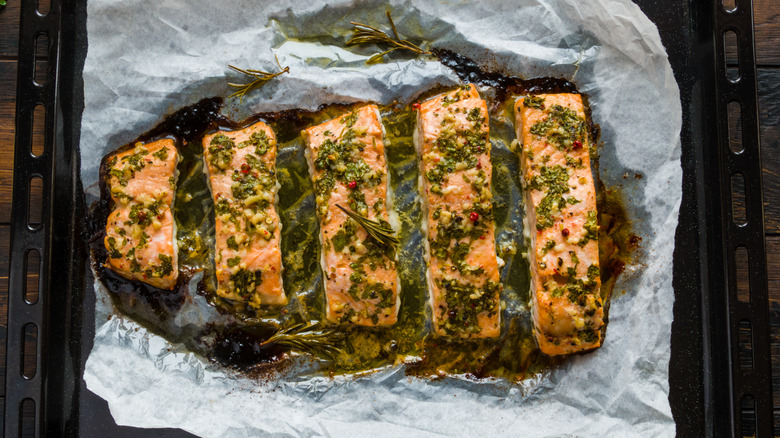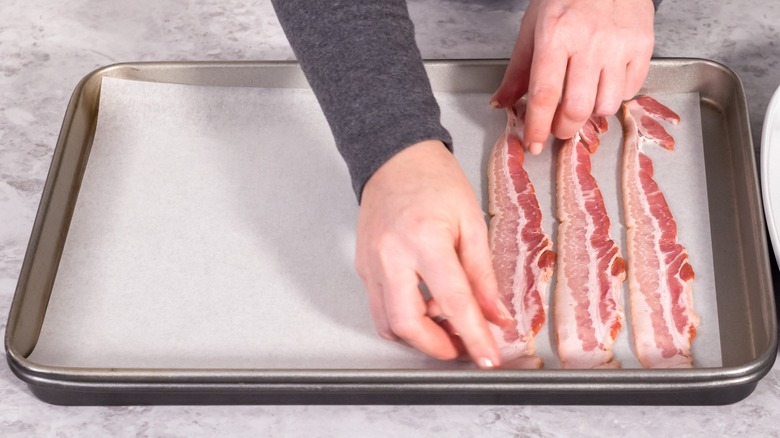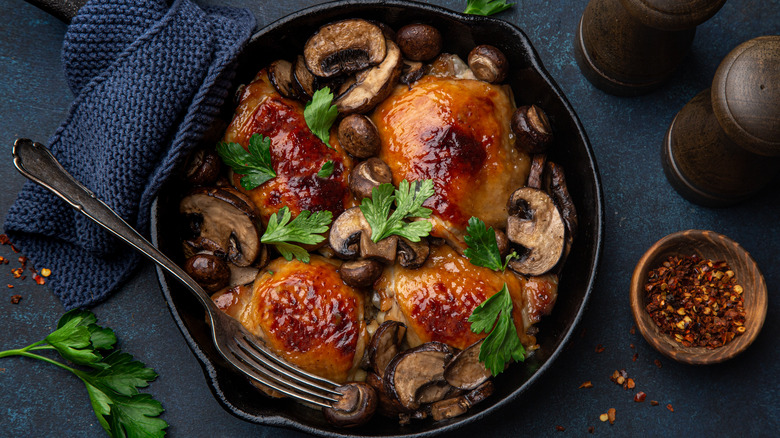Parchment Paper Is Blocking Your Food From Delicious Browning
Parchment paper can be a baker's best friend, making it a breeze to remove brownies from a pan and creating a barrier between cookies and a cookie sheet to make cleanup a cinch. But if you're a cook on the lookout for the best way to achieve beautifully browned meat when roasting, parchment paper may get in the way.
Parchment paper is simply paper that has been coated to make it resistant to heat and moisture. It also has a non-stick surface. Its ability to resist heat (up to about 450 degrees Fahrenheit) makes it superior to wax paper, which can melt and catch fire in the oven.
If you're baking proteins using the en papillote method, parchment is ideal because it helps to keep the ingredients moist. Plus, it can make for a pretty presentation. Otherwise, when roasting meats in the oven, you'll need to either place them directly on the pan or line it with aluminum foil in order to create all of the flavor that comes from browning. The reason for that is the Maillard reaction, the process through which proteins and sugars are broken down by heat.
How parchment paper can get in the way of browning
While the Maillard reaction is complex, it's easy to see, smell, and taste when it has occurred. The exterior of meats and vegetables becomes brown, the flavor richer and deeper, and the aroma is transformed.
When food is roasting in a hot oven, the heat that circulates throughout the oven can contribute to browning. However, the conduction of heat through the pan is responsible for most of the browning that happens.
Because metal is an excellent conductor of heat, the food touching the pan is more easily transformed via the Maillard reaction as opposed to the parts of the food that are not. Placing parchment paper in between the food and the pan creates a barrier. The paper will not eliminate browning altogether, but it will reduce the ability of the pan to transform the food in the same way.
Making the Maillard reaction work on the stovetop
Knowing that contact with the pan is crucial for food to brown can help improve your stovetop cooking, too. There are a few ways that you can maximize the Maillard reaction when cooking meats.
First, using a cast iron skillet can help you to get the best browning on your foods on the stove. Pans made from other metals can have changes in temperature during the cooking process while cast iron skillets remain reliably hot. An added bonus: this skilled can go in the oven as well.
Another tip is to use your spatula, tongs, or other cooking utensil, to gently push the meat down while cooking. This will help to ensure that all of the bottom surface of the meat is touching the pan.
Finally, eliminate water on the surface of meat. Water is the enemy of the Maillard reaction and will impede your ability to get a beautiful brown sear. Be sure to use a paper towel to pat the meat as dry as possible and to have the pan preheated so that any moisture that does remain quickly evaporates.



